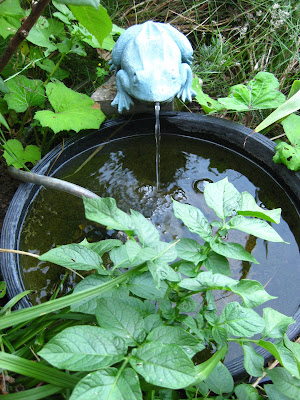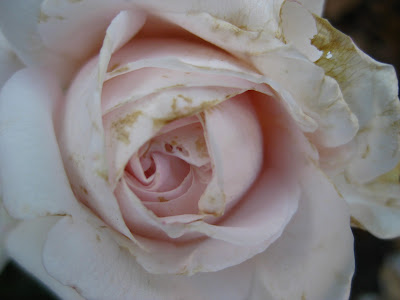A DIY blog for music -loving - cakeeating people like me. A bit of hair and style tips is included - Enjoy
august 30, 2015
august 26, 2015
august 18, 2015
Note til mig selv
Kilde:
http://www.dr.dk/levnu/fritid/brevkasse-hvordan-faar-jeg-pulsen-op-trods-daarligt-knae
Eksempler på kredsløbstræning:
- Cykling er ofte muligt. Enten: Kontinuerligt, distancecykling, med øget varighed i ganske små skridt. Eller intervaller, fx 20 sek. hurtigt eller tungt og 2 min. pause, let cykling, fx 3 gange. Der findes utallige intervalmetoder.
- Hurtig gang, powerwalk, eventuelt i intervaller.
- Stavgang; sætter intensiteten i vejret uden at øge belastningen af knæ (ved god teknik).
- Steptræning op og ned ad en stepkasse. I starten lav 10-15 cm, senere 20-25 cm. Step-træning opstod ud fra knæ-genoptræning og giver høj intensitet med lav belastning af knæ. Men det kræver god teknik, og at man starter med en lav bænk i kort tid ad gangen.
- Konditionstræningsmaskiner såsom crosstrainer (ellipsetræner) og skøjtetræner (sideværts bevægelser kan virke belastende).
- Cardiomaskiner, som især involverer for overkroppen og kropsstammen og aflaster knæene: Overkropscykel og SkiErg (skitræner) eller ThoraxTrainer.
- Sjipning. Det foregår godt nok med jog og hop, men med fjedrende trin lige over jorden, og man behøver ikke at sjippe særlig lang tid ad gangen – i starten er det nok med 3-5 minutter.
- Svømning fx ryg- eller brystcrawl (brystsvømning benspark kan være hårdt for knæ).
- Aqua fitness eller løb i vand. Det er intensivt og bruges af bl.a. løbere til genoptræning.
august 16, 2015
Note to self about peony seeds and seeds ordered

Estimated delivery : Tue. Aug. 25 - Thu. Sep. 17 --
http://stores.ebay.com/homesale-online2013/Plant-Seeds-/_i.html?_fsub=3222311012&_sid=1082177092&_trksid=p4634.c0.m322
Source:
americanpeonysociety
1)Soak the seed in water for several days, changing water once or twice a day. This step hydrates the seed, and may help remove germination inhibitors. Discard any seeds that are mushy or become moldy.
2) Place the soaked seeds in a plastic bag with barely moist vermiculite or peat moss, and close tightly.
3) Incubate the seeds by placing the bag in a warm area, preferably 80 to 90 F. It is important that the seeds be exposed to this relatively high temperature. If held at room temperature, incubation will take much longer, and will not be as uniform. Thus it is important to find a spot with the right temperature, and verify it with a thermometer. Places I have successfully used include on top of a hot water heater, and above grow light fixtures.
Inspect the seeds every two weeks to check for the proper level of moisture in the bags, and check the condition of the seeds. You will probably not see any changes in the seed during the incubation period. The length of the incubation period will depend on the temperature, but normally three months is sufficient.
4) After the incubation period, move the bag to a cool location for rooting to occur, between 50 to 60 F. Again, this temperature range is important. If too cool, rooting will occur slowly. If too high, it will not occur at all. Roots will start to appear within a few weeks, and the roots can grow to six inches or more.
5) After roots have formed, move the seeds to a temperature of approximately 40 F. This step overcomes the leaf dormancy. Again, if the temperature is too cool, the process will occur more slowly. When dormancy has diminished, a leaf will begin to emerge. At this stage, the seed is ready to be placed in a warm area to grow. If removed from this step before dormancy has been overcome, they generally will not grow when planted out, so make sure a leaf can be seen emerging from the root. At this stage, the germinated seeds can be treated like any other growing plant, and planted outside or grown on in pots. The large root will require that a deep pot be used if growing on in ports. If removed from this step before dormancy has been overcome, they generally will not grow when planted out.
6) The first season, the plants may only produce a single leaf. Provide them with fertile, well drained soil, keep them well watered, and protect them from hot sun. In the fall, apply a covering of mulch in cold climates. The plants will get larger each year, with some blooming the the third year, some in the fourth year, and the stragglers in the fifth year.
Evening walk August 2015
Etiketter:
2015,
Dahlia,
flower,
flowers,
flowers 2015,
garden,
Johan Wolfgang Von Goethe,
rose,
roses
Abonner på:
Kommentarer (Atom)




















































